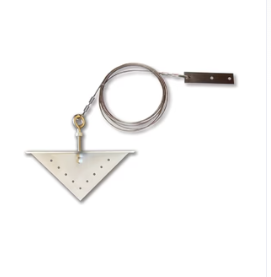Introduction:
Vinyl paint, also known as vinyl dye or vinyl spray paint, is a versatile and cost-effective solution for transforming various surfaces. From reviving old furniture to updating automotive interiors, vinyl paint offers an array of possibilities to breathe new life into your surroundings. In this comprehensive guide, we will explore the world of vinyl paint, understanding its properties, applications, benefits, and tips for achieving outstanding results. Join us as we delve into the art of vinyl painting and discover how this innovative product can help you achieve a fresh and vibrant look in your home, car, or DIY projects.
- What is Vinyl Paint?
- Definition and Composition Vinyl paint is a specially formulated coating designed to adhere to and color vinyl, leather, plastics, and other synthetic materials. It typically contains vinyl-specific solvents and pigments that bond with the surface, creating a durable and long-lasting finish.
- Types of Vinyl Paint
- Vinyl Spray Paint: Available in aerosol cans for easy application, spray paint offers quick and even coverage, ideal for large surfaces and automotive projects.
- Vinyl Liquid Paint: Liquid paint can be applied with brushes or paint rollers, allowing for greater control over the painting process and precise detail work.
- Advantages of Vinyl Paint
- Cost-Effective Transformation Vinyl paint provides an affordable alternative to replacing or reupholstering vinyl or leather surfaces, saving both time and money.
- Diverse Applications Vinyl paint can be used on various surfaces, including vinyl furniture, car interiors, boat seats, plastic appliances, and more.
- Wide Range of Colors Vinyl paint comes in an extensive array of colors, allowing for creative expression and customization to suit any aesthetic.
- Restores and Revives By covering wear, scuffs, and fading, vinyl paint can give new life to worn-out or aged surfaces, restoring their appearance and functionality.
III. Choosing the Right Vinyl Paint
- Compatibility with Surfaces Ensure the vinyl paint is compatible with the specific surface you intend to paint. Some vinyl paints are formulated for flexible materials, while others work best on rigid plastics.
- Quality and Brand Reputation Select high-quality vinyl paint from reputable brands to ensure better adhesion, color retention, and overall performance.
- Color Selection Consider the color options and choose a shade that complements your interior or project vision.
- Preparing the Surface
- Cleaning Thoroughly clean the surface to remove dirt, grease, and contaminants that could affect paint adhesion.
- Sanding (If Required) In some cases, light sanding may be necessary to create a more textured surface for better paint adhesion.
- Patching and Repair Address any cracks, tears, or damage on the surface before painting for a smooth and even finish.
- Steps for Vinyl Painting
- Surface Priming (Optional) Some vinyl paints may require a primer for improved adhesion and to create a smooth base for the topcoat.
- Proper Ventilation Ensure you have proper ventilation when using vinyl spray paint, preferably in a well-ventilated area or outdoors.
- Test and Practice Before applying the paint to the entire surface, test it on a small, inconspicuous area to ensure compatibility and desired results.
- Spray Painting Technique For spray paint application, maintain an even distance between the can and the surface, using steady, sweeping motions for a consistent finish.
- Liquid Paint Application When using liquid paint, use smooth brush strokes or a foam roller to achieve an even coat, avoiding excess paint that can lead to drips.
- Drying and Curing
- Drying Time Allow sufficient drying time between coats, following the manufacturer’s instructions on the paint can.
- Curing Period Be patient during the curing process to achieve a durable finish. Avoid placing heavy objects or using the painted surface until the paint has fully cured.
VII. Maintenance and Care
- Gentle Cleaning To maintain the painted surface, use a soft, damp cloth for gentle cleaning without harsh chemicals.
- Avoid Abrasive Materials Prevent scratching or damaging the painted surface by avoiding abrasive materials or tools.
VIII. Safety Precautions
- Proper Ventilation Ensure adequate ventilation to avoid inhaling paint fumes or aerosol particles.
- Protective Gear Wear appropriate safety gear, such as gloves and a mask, when handling paint and during the painting process.
- Applications of Vinyl Paint
- Furniture Makeovers Update and personalize vinyl furniture pieces such as chairs, ottomans, and sofas with a fresh coat of paint.
- Automotive Interior Refresh and customize car interiors, including seats, door panels, and dashboard components.
- DIY Projects Embrace your creativity by using vinyl paint for various DIY projects, such as decorative accents, storage bins, and home accessories.
- Conclusion
Vinyl paint unlocks a world of possibilities for transforming and rejuvenating vinyl, leather, and plastic surfaces. Its affordability, versatility, and ease of use make it an attractive option for DIY enthusiasts and homeowners seeking to refresh their living spaces or revamp automotive interiors. By following proper preparation, painting techniques, and care, vinyl paint empowers you to achieve outstanding results and turn ordinary surfaces into stunning focal points. Whether you’re revitalizing furniture, customizing car interiors, or embarking on creative DIY endeavors, vinyl paint provides a rewarding and innovative solution for bringing your visions to life.


